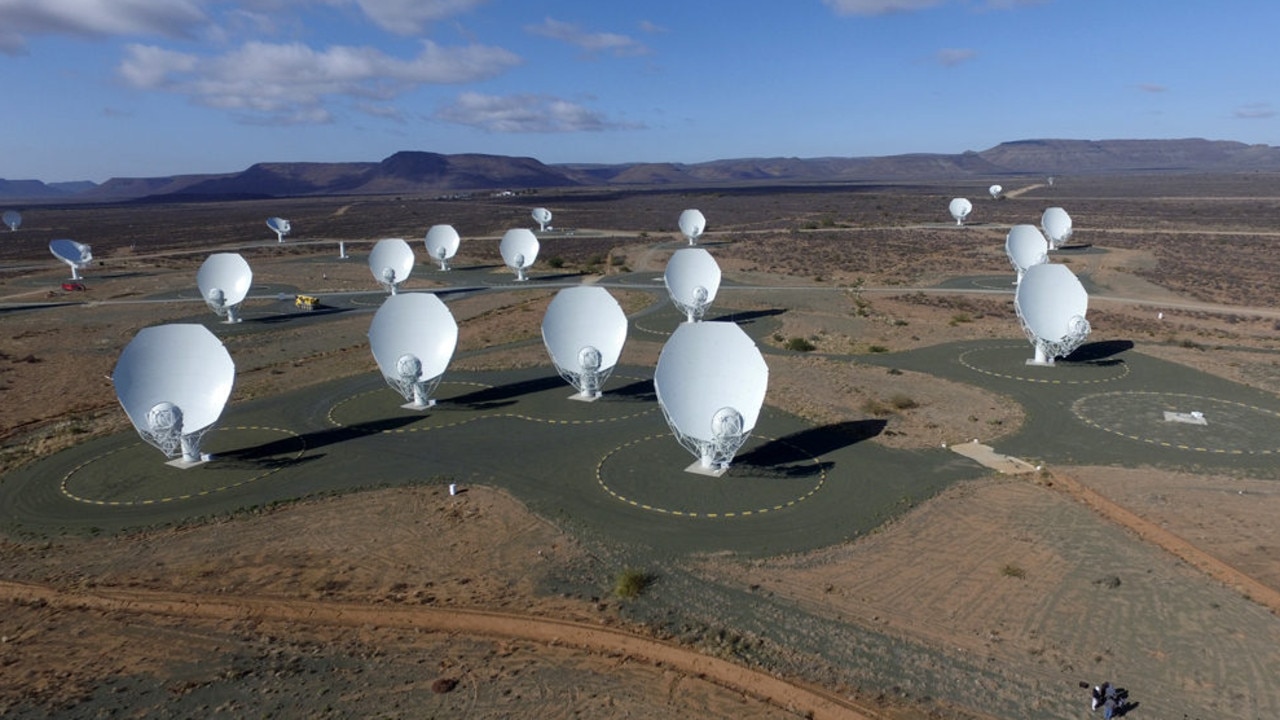World’s most powerful radio telescope being built in outback Australia
The world’s most powerful radio telescope is taking shape in remote Western Australia to provide new insights into stars, galaxies and extraterrestrial life

READING LEVEL: GREEN
The world’s most powerful radio telescope is being built in the Australian outback.
Work has begun on a vast network of more than 100,000 antennas which will become part of a massive instrument that aims to untangle mysteries about the creation of stars, galaxies and extraterrestrial* life.
The antennas being built in remote Western Australia and a series of dishes in South Africa will form the Square Kilometre Array* (SKA) telescope.

The idea for the telescope first came about in the early 1990s, but the project was plagued* by delays, funding issues and diplomatic* challenges.
The SKA Observatory’s director-general, Professor Philip Diamond, described the beginning of its construction as “momentous”.
He said the telescope “will be one of humanity’s biggest-ever scientific endeavours*”.

Its name is based on the planners’ original aim – a telescope that could observe a one-square-kilometre surface – but the current Australian and South African sections will have a combined collecting area of just under half that, according to the observatory.
Both countries have huge expanses of land in remote areas with little radio disturbance, making them ideal for such telescopes.

More than 130,000 Christmas tree-shaped antennas are planned to be built on the traditional lands of the Wajarri Aboriginal people in WA.
They have dubbed the site “Inyarrimanha Ilgari Bundara”, which means “sharing sky and stars” in the language of the land’s traditional owners.
“We honour their willingness to share their skies and stars with us as we seek to find answers to some of the most fundamental science questions we face,” Professor Diamond said.
The South African site will feature almost 200 dishes in the remote Karoo region, according to the organisation.

Comparison between radio telescopes is difficult as they operate in different frequencies, according to SKA’s planners.
But they have said that the two sites will give SKA higher sensitivity over single-dish radio telescopes because its arrays are spread out, forming a much bigger “virtual dish”.
The project will help in “charting the birth and death of galaxies, searching for new types of gravitational waves and expanding the boundaries of what we know about the universe”, said telescope director Sarah Pearce.
Danny Price, from the Curtin Institute of Radio Astronomy, said the telescope would be extremely powerful.
“To put the sensitivity of the SKA into perspective, the SKA could detect a mobile phone in the pocket of an astronaut on Mars, 225 million kilometres away,” he said.
The SKA Observatory has said the telescope should start making scientific observations by the late 2020s.
The organisation has 14 members: Britain, Australia, South Africa, Canada, China, France, Germany, India, Italy, New Zealand, Spain, Sweden, Switzerland and The Netherlands.
GLOSSARY
- extraterrestrial: of or from a place outside Earth
- array: a group of several radio antennas that work together to, in effect, create a single telescope across a large area
- plagued: caused worry, pain or difficulty to something over time
- diplomatic: to do with managing relationships between different countries or groups
- endeavours: attempts to achieve a goal
EXTRA READING
Aussie Dish to support Moon landings
‘Weird’ signal excites alien hunters
Space capsule reveals its treasures in Aussie outback
QUICK QUIZ
- How many antennas are being built in remote WA?
- The antennas will work with dishes being built in which other country?
- What does SKA stand for?
- What does “Inyarrimanha Ilgari Bundara” mean in the language of the land’s traditional owners?
- When will the SKA telescope begin its scientific observations?
LISTEN TO THIS STORY
CLASSROOM ACTIVITIES
1. Be inspired
“Sharing sky and stars.” Create an artwork, story (or anything else that you would like to do) inspired by this idea.
Time: allow 30 minutes to complete this activity
Curriculum Links: English; Visual Arts
2. Extension
Fourteen countries are members of the SKA Observatory. Write a letter or design a poster. The purpose of your letter or poster is to convince another country to join the organisation for the SKA Observatory.
Time: allow 45 minutes to complete this activity
Curriculum Links: English; Science; Visual Communication Design
VCOP ACTIVITY
Read with Kung Fu punctuation
Pair up with the article between you and stand up to make it easy to demonstrate your Kung Fu punctuation.
Practise reading one sentence at a time. Now read it again, while acting out the punctuation as you read.
Read and act three sentences before swapping with your partner.
Take two turns each.
Now ask your partner to read a sentence out loud while you try and act out the punctuation. Can you keep up? Swap over?
Try acting out two sentences – are you laughing yet?

